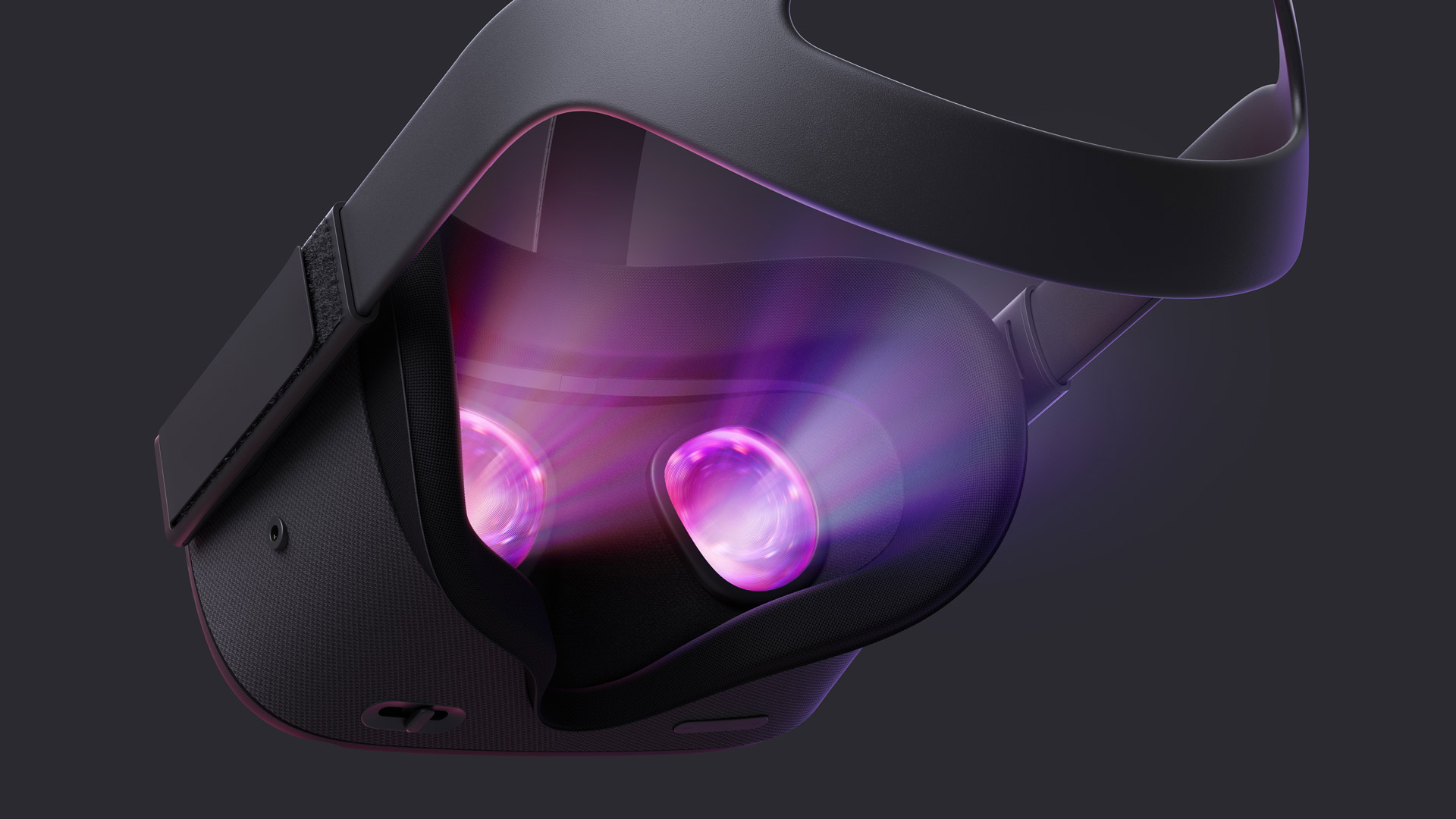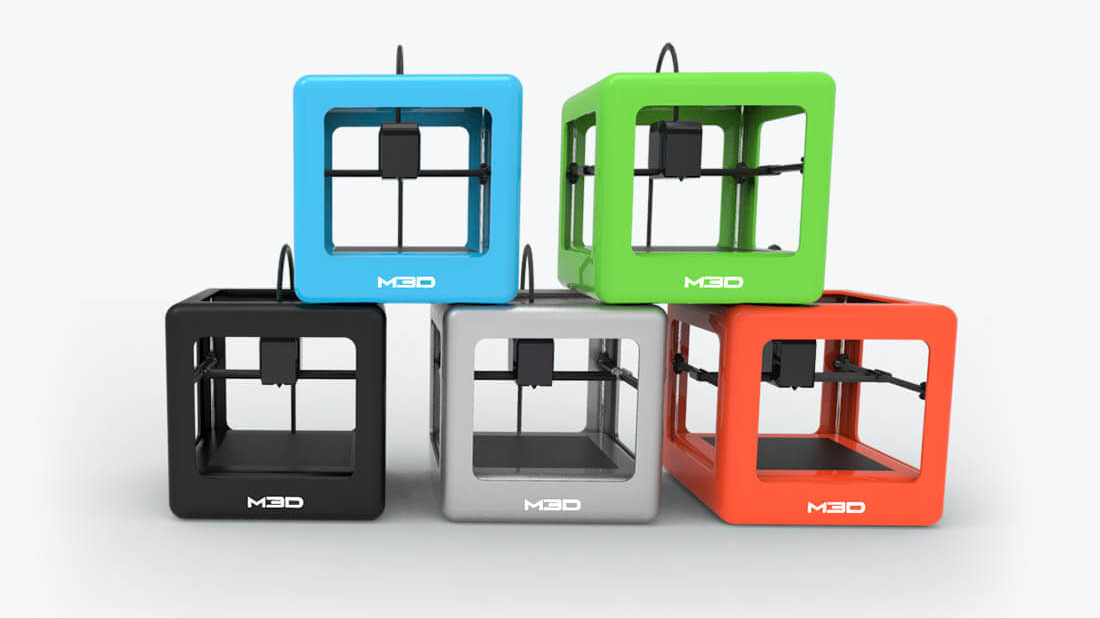3 'next big things' in design that are yet to take off
These predicted game-changers remain niche.
Every so often, there's a clarion call for designers: this bright, shiny new technology –this brave new world – will change everything. It'll revolutionise how we work, how we live, how people engage with our brand campaigns at every level.
In the last decade, these game-changing innovations have included huge moves forward in VR/AR, the inexorable rise of AI, increased affordability of 3D printing, and the fast-growing Internet of Things (or IoT) – smart, connected objects that support your every whim at work and home.
Now, we don't want to be naysayers, or come across like 1990s luddites moaning that the internet will never catch on. It is undeniable that all these design trends have yielded some incredible opportunities. But have they changed the game as quickly, or as dramatically, as predicted? No. Or at least, not yet.
Of course, according to sci-fi visions of 2018 we should all be zipping about on hoverboards, exploring deep space and getting wiped out by super-intelligent robots of our own making by now. That hasn't happened either. Yet.
Read on as we explore the three biggest examples of premature hype in recent years, and what this means for the average designer...
01. Virtual Reality

Unless you were living under a stone in 2016, you won't have missed the VR hype. Headset after headset hit the market in quick succession – Oculus Rift, HTC Vive, PlayStation VR, and then Microsoft's offering, the 'mixed-reality' HoloLens.
That's without the sea of comparatively inexpensive alternatives that used your phone, ranging from Samsung's Gear VR to Google Cardboard. It seemed like VR was here to stay. But where are we now?
Get the Creative Bloq Newsletter
Daily design news, reviews, how-tos and more, as picked by the editors.
VR simply hasn't taken off in a truly mainstream way – even in gaming, according to a recent industry survey at the Game Developers Conference. The biggest global phenomenon by some distance has been in the AR space: Pokémon Go.
That's not to say there haven't been amazing uses of VR in brand campaigns, and if the context is appropriate, there are plenty of opportunities to create an immersive VR experience yourself. But is it truly mainstream yet? No.
Facebook-owned Oculus has just rolled the dice again by announcing the Oculus Quest, the first fully self-contained headset that will support 'six degrees of freedom' – meaning your head position, tilt and rotation is fully tracked throughout the experience. Will VR finally take over our homes in 2019? Time will tell.
02. Artificial Intelligence
If you're one of those designers who fears that AI bots will steal your job, there's no need to panic yet. While there have been some phenomenal applications at the cutting edge of the field, on a day-to-day basis the public faces of AI – like Siri and Alexa – still have a way to go before we can genuinely consider them intelligent.
For brands, one of the most exciting applications of AI comes in the form of chat bots, interacting with customers in real time. Banks such as DBS, OCBC and Citibank are actively innovating in this space, and in the next few years such narrowly task-focused bots could expand into broader areas. But it's not mainstream yet.
Compared to most of its western counterparts, China has embraced the potential of AI and automation much more readily. One example is Alibaba Cloud's latest innovation: ET Brain. Launched earlier in 2018 with a dynamic brand identity by Wolff Olins, it's an "intelligent, adaptive technology platform" – processing huge amounts of data in real-time, and learning as it goes.
As the video above explains, ET Brain applies AI at a macro level, engaging with the infrastructure of a city on everything from traffic flow, to environment management, to healthcare. Whether this glimpse of an AI-driven future excites or terrifies you depends on your perspective, and which movies you've been watching.
Will designers be replaced by robots at some point in the future? Probably not. But AI could provide more opportunities to automate common design tasks, freeing up more time to engage the creative, problem-solving human brain.
03. 3D Printing

Okay, so 3D printing has been around in a rudimentary form since the mid-1980s – the concept is not new. The enormous amount of hype in recent years relates more to its ever-increasing accessibility and affordability. What used to be a huge, industrial-scale investment for a manufacturer can now be picked up for less than the price of a high-end smartphone.
Rather like VR, designers were raving about 3D printing not so long ago. The possibilities seemed endless. In 2015, at the height of the hype, we ran a series of articles here on Creative Bloq – including a guide to 3D printing for beginners. Three years on, has 3D printing revolutionised design? Erm, not quite.
According to our sister site TechRadar's round-up of the best 3D printers for 2018, the entry-level choice is the M3D Micro – which costs a few hundred pounds, and is compact enough to sit on your desk. Even higher-end models such as the MakerBot Replicator+ or Ultimaker 2+ are still only a few thousand. It couldn't be more accessible. But again, like VR, there's been a great deal on focus on the how, and not enough on the why.
Aside from gaming and entertainment, VR provides a wealth of opportunities in the training space – particularly in the military and medical sectors. 3D printing remains an exciting area in manufacturing and architecture, and could prove revolutionary in medical applications such as prosthetics and organ transplants. The need is there, and the technology facilitates a solution.
Do you need a 3D printer or a VR headset gathering dust in your design studio? Probably not. Should you shoehorn it into a project because you can? No. But if the right creative problem comes along for which those technologies make total sense, they've never been more affordable. Just don't believe the hype.
Related articles:

Thank you for reading 5 articles this month* Join now for unlimited access
Enjoy your first month for just £1 / $1 / €1
*Read 5 free articles per month without a subscription

Join now for unlimited access
Try first month for just £1 / $1 / €1

Nick has worked with world-class agencies including Wolff Olins, Taxi Studio and Vault49 on brand storytelling, tone of voice and verbal strategy for global brands such as Virgin, TikTok, and Bite Back 2030. Nick launched the Brand Impact Awards in 2013 while editor of Computer Arts, and remains chair of judges. He's written for Creative Bloq on design and branding matters since the site's launch.